
Mercury will reach its greatest elongation on December 4, 2023.
Mercury in November and December 2023
Where to look: Look west, in the sunset direction – shortly after sunset – for Mercury. The sun’s innermost planet may be challenging even for the more favored view from the Southern Hemisphere.
Greatest elongation: Mercury is farthest from the sun – at greatest elongation – at 14 UTC on December 4, 2023 (8 a.m. CDT on December 4). It’s 21 degrees from the sun.
Brightness: Mercury emerged in the evening sky the second week of November at -0.5 magnitude but it’s at a far southerly declination so it is difficult to observe for the Northern Hemisphere. At greatest elongation, Mercury shines at magnitude -0.3, making it brighter than most stars. But, after greatest elongation, the innermost planet will rapidly fade as it sweeps toward Earth. It’ll probably disappear by mid-month and will reach inferior conjunction – when it will pass between Earth and the sun – on December 22.
Through a telescope: Mercury will appear about 62% illuminated, at greatest elongation. It’ll measure 6.7 arcseconds across.
Constellation: Mercury will lie in front of the constellation Sagittarius the Archer at this elongation. But most of the stars in this constellation will be lost in the twilight.
Note: As the innermost planet, Mercury is tied to the sun in our sky. As a result, it never ventures very far above the horizon after sunset. So as soon as the sun disappears below your horizon, your clock starts ticking. Will you see the glowing point of light that is Mercury before it drops below the horizon, following the setting sun?
The 2024 lunar calendars are here! Best Christmas gifts in the universe! Check ’em out here.
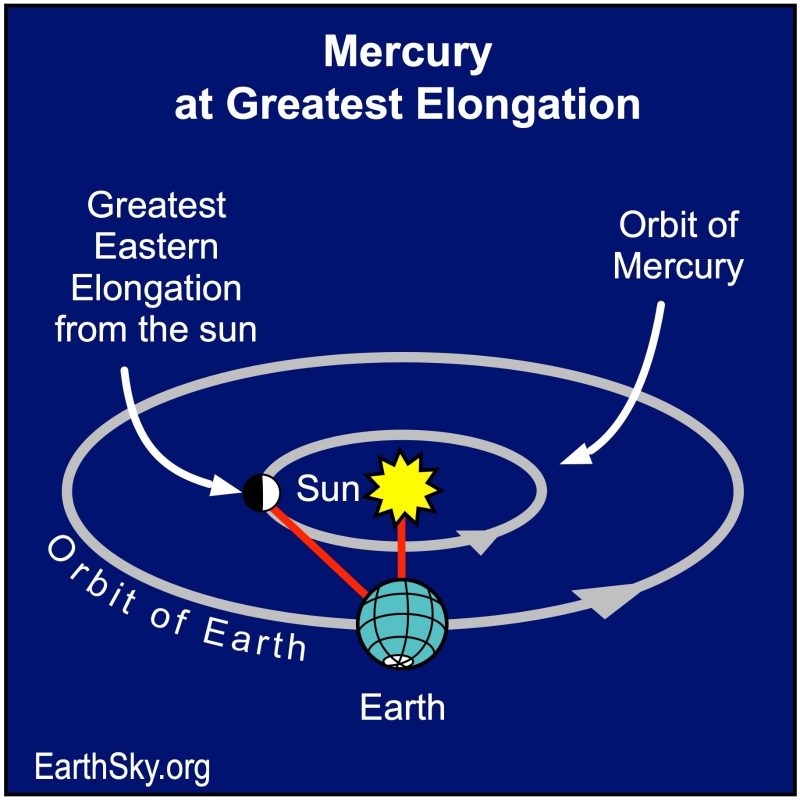
Finder charts for November Northern Hemisphere evenings
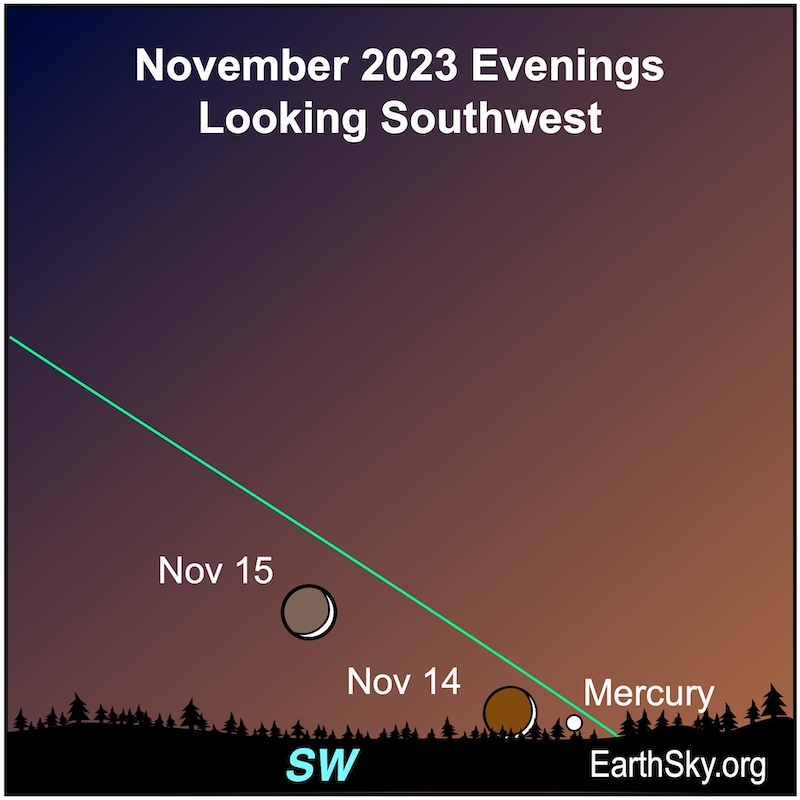

Finder charts for November Southern Hemisphere evenings

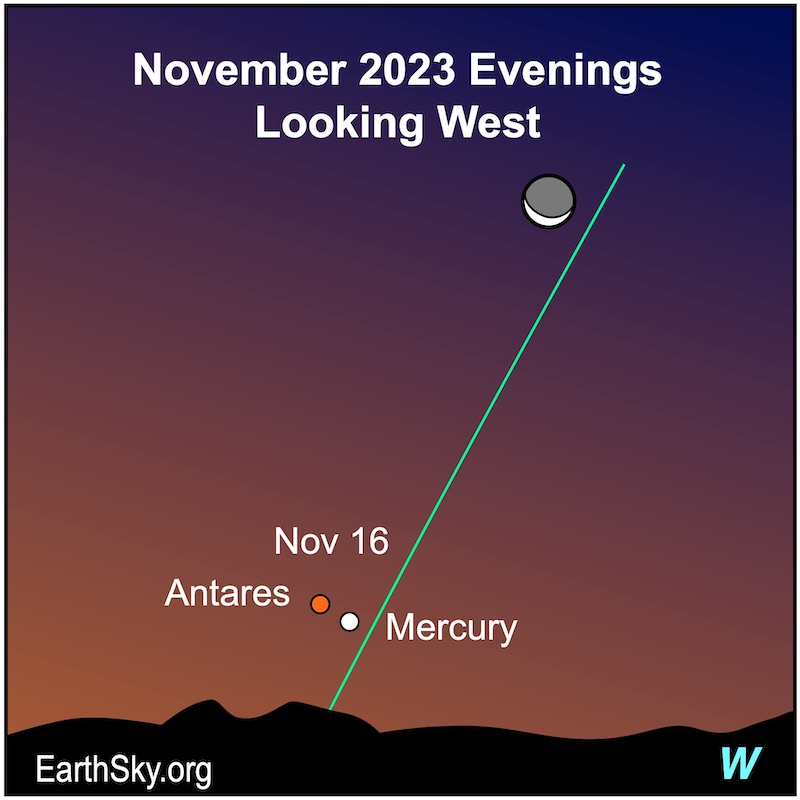

For precise sun and Mercury rising times at your location:
Old Farmer’s Almanac (U.S. and Canada)
timeanddate.com (worldwide)
Stellarium (online planetarium program)
Mercury events in 2023 and 2024
Note: Times are in UTC
Jan 7, 2023: Inferior conjunction (races between Earth and sun)
Jan 30, 2023: Greatest elongation (morning)
Mar 17, 2023: Superior conjunction (passes behind sun from Earth)
Apr 11, 2023: Greatest elongation (evening)
May 1, 2023: Inferior conjunction (races between Earth and sun)
May 29, 2023: Greatest elongation (morning)
Jul 1, 2023: Superior conjunction (passes behind sun from Earth)
Aug 10, 2023: Greatest elongation (evening)
Sep 6, 2023: Inferior conjunction (races between Earth and sun)
Sep 22, 2023: Greatest elongation (morning)
Oct 20, 2023: Superior conjunction (passes behind sun from Earth)
Dec 4, 2023: Greatest elongation (evening)
Dec 22, 2023: Inferior conjunction (races between Earth and sun)
Jan 12, 2024: Greatest elongation (morning)
Feb 28, 2024: Superior conjunction (passes behind sun from Earth)
Mar 24, 2024: Greatest elongation (evening)
Apr 11, 2024: Inferior conjunction (races between Earth and sun)
May 9, 2024: Greatest elongation (morning)
Jun 14, 2024: Superior conjunction (passes behind sun from Earth)
Jul 22, 2024: Greatest elongation (evening)
Aug 19, 2024: Inferior conjunction (races between Earth and sun)
Sep 5, 2024: Greatest elongation (morning)
Sep 30, 2024: Superior conjunction (passes behind sun from Earth)
Nov 16, 2024: Greatest elongation (evening)
Dec 5, 2024: Inferior conjunction (races between Earth and sun)
Dec 25, 2024: Greatest elongation (morning)
Heliocentric view of Mercury December 2023
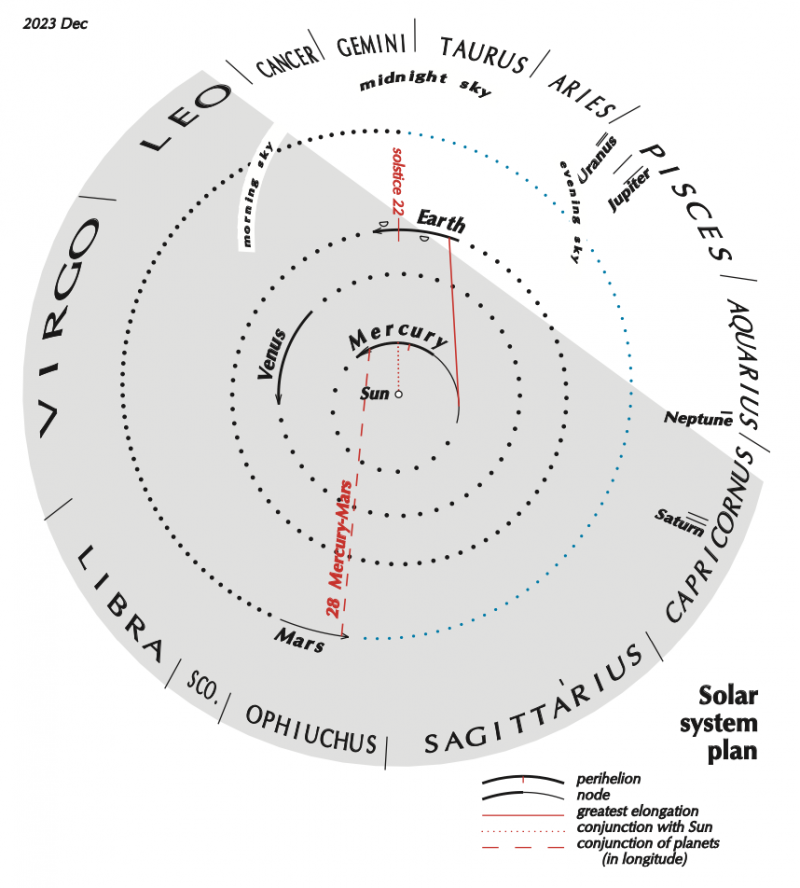
A comparison of elongations
The farthest from the sun that Mercury can ever appear on the sky’s dome is about 28 degrees. And the least distance is around 18 degrees.
Also, elongations are better or worse depending on the time of year they occur. So in 2023, the Southern Hemisphere had the best evening elongation of Mercury in August 2023. And the Northern Hemisphere had the best evening apparition in April.
In the autumn for either hemisphere, the ecliptic – or path of the sun, moon and planets – makes a narrow angle to the horizon in the evening. But it makes a steep slant, nearly perpendicular, in the morning. So, in autumn from either hemisphere, morning elongations of Mercury are best. That’s when Mercury appears higher above the horizon and farther from the glow of the sun. However, evening elongations in autumn are harder to see.
In the spring for either hemisphere, the situation reverses. The ecliptic and horizon meet at a sharper angle on spring evenings and a narrower angle on spring mornings. So, in springtime for either hemisphere, evening elongations of Mercury are best. Meanwhile, morning elongations in springtime are harder to see.
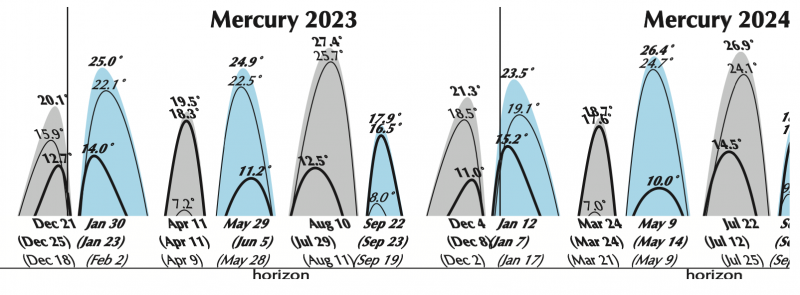
More Mercury elongation comparisons for 2023
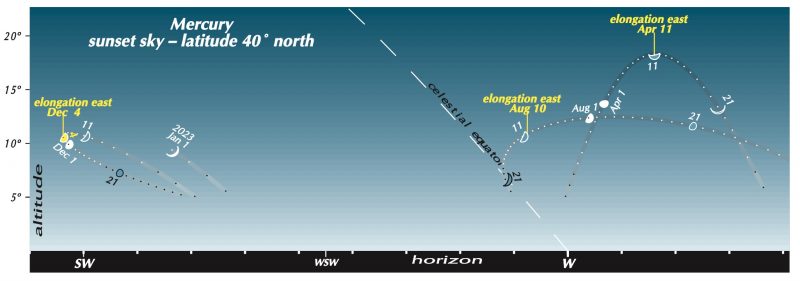
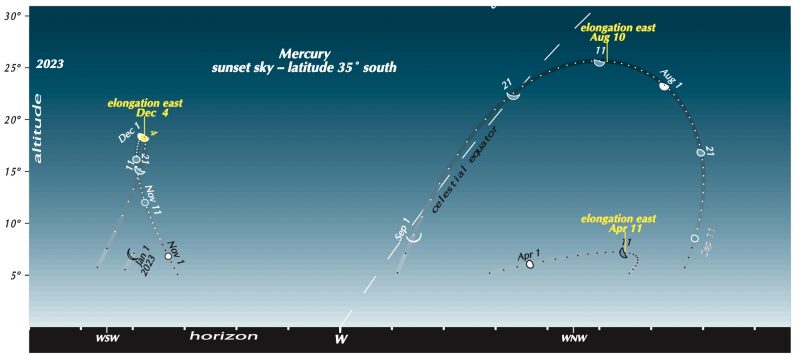
Mercury photos from our community

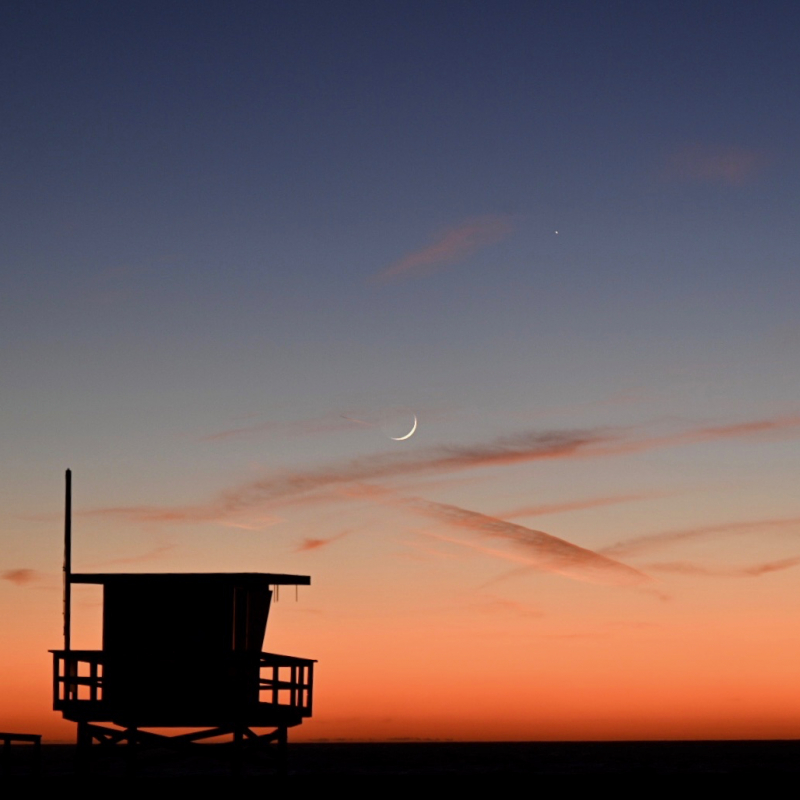
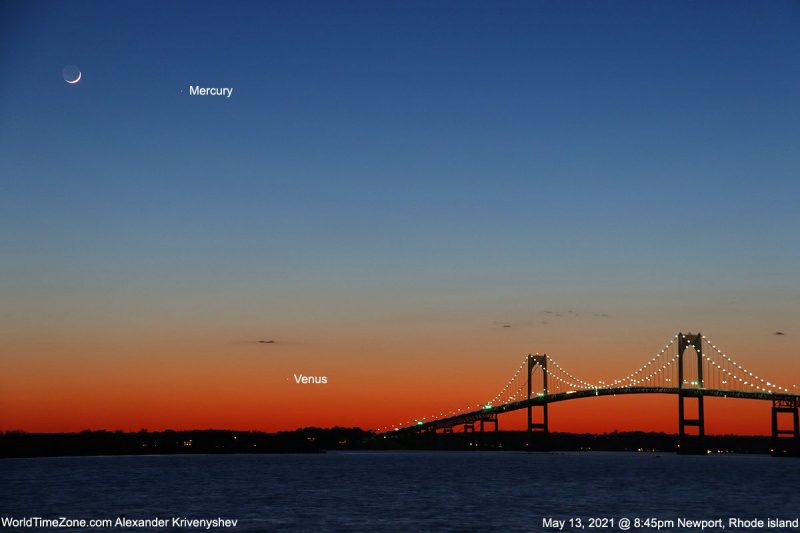
Bottom line: Mercury is visible in the evening sky. Look in the west as the sky is darkening. The planet will reach its greatest elongation overnight on December 4, 2023.
Submit your photos to EarthSky here.
Read about greatest elongations, superior and inferior conjunctions: Definitions for stargazers
The post Mercury at greatest evening elongation, start watching now first appeared on EarthSky.
0 Commentaires